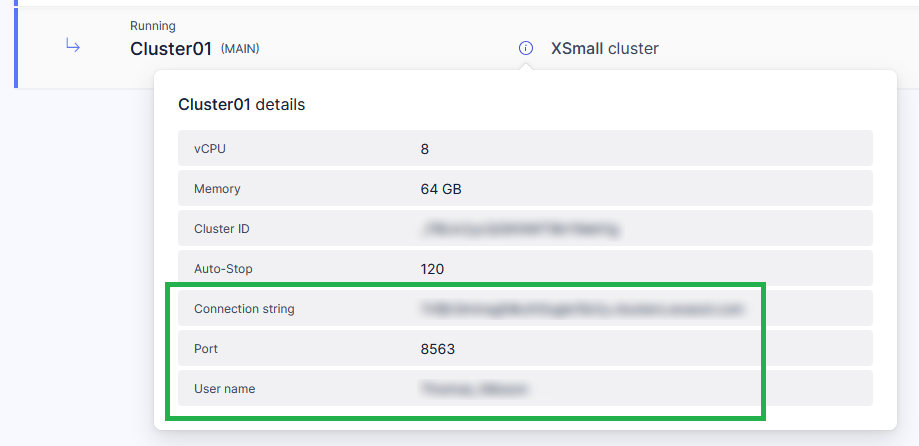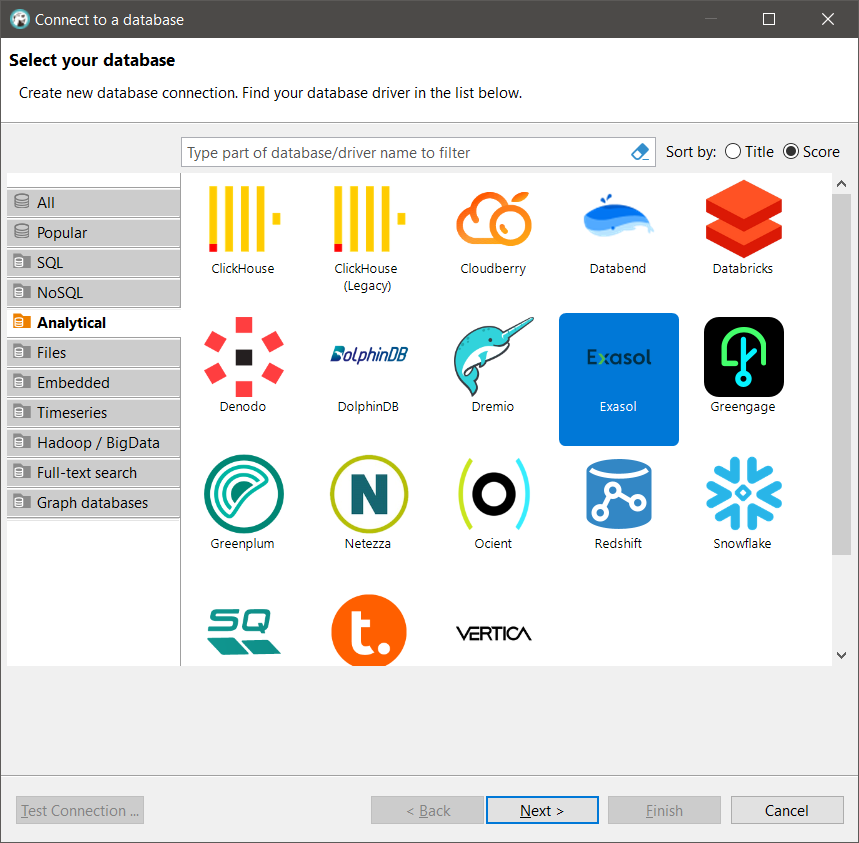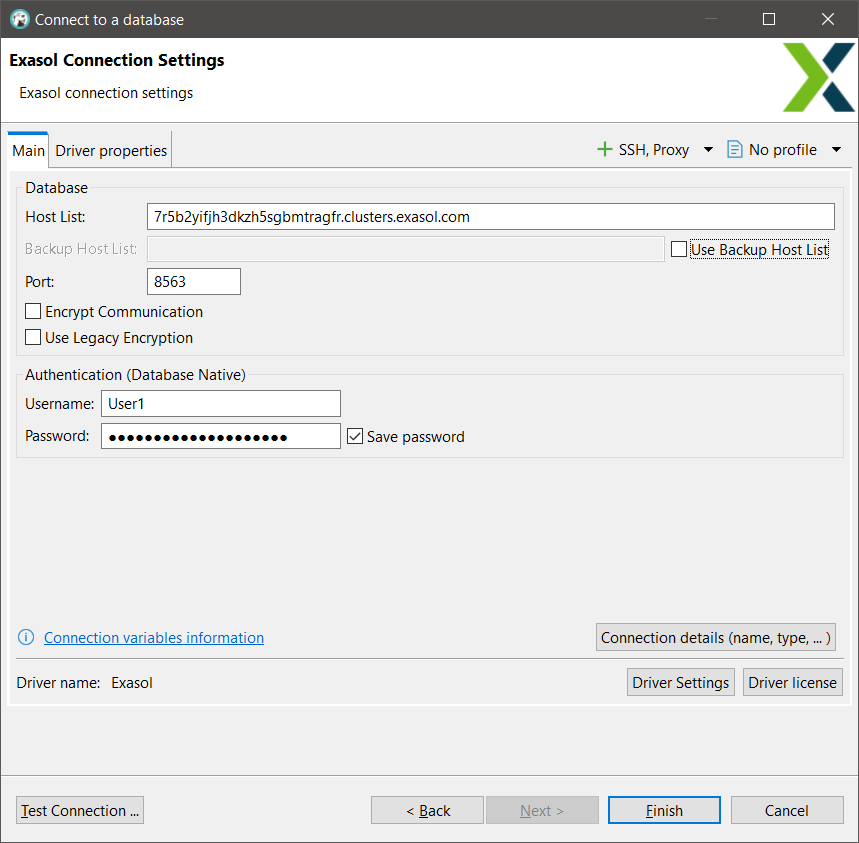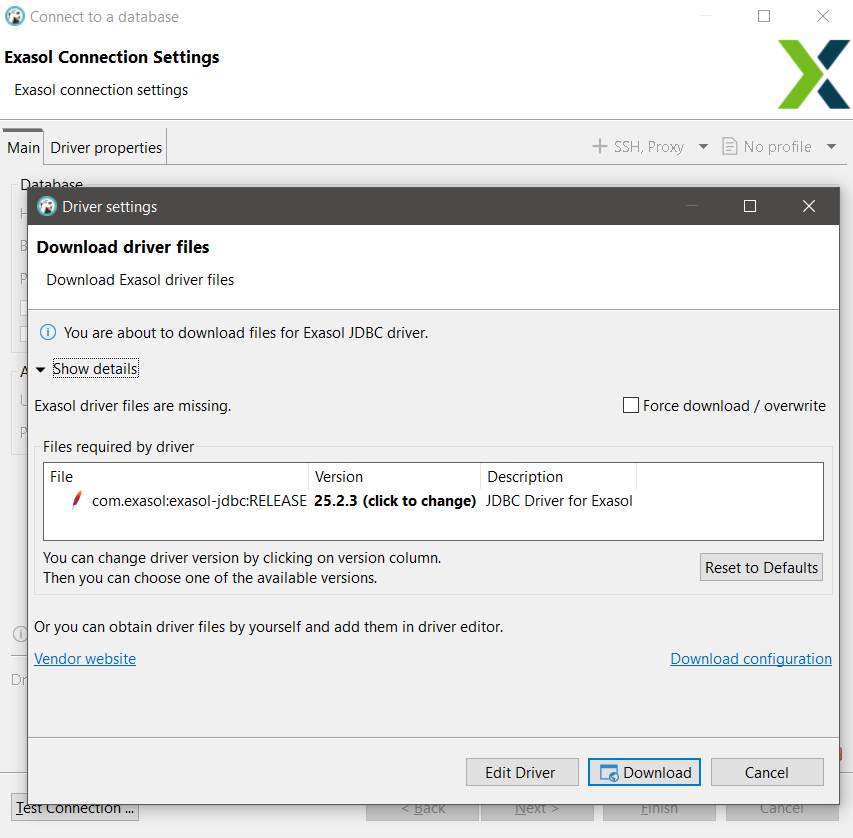This article explains how to connect to Exasol with DBeaver Community edition.
DBeaver Community is a free, universal SQL client and database administration tool that runs on Windows, Linux, and macOS. For more information, refer to the DBeaver Community website.
This article shows how to connect to Exasol using DBeaver Community edition on Windows. The procedure is essentially the same on all platforms. For more help, refer to the DBeaver Documentation.
Exasol takes no responsibility for changes in functionality or terms of use for third-party tools. For more details about the compatibility and use of these tools with Exasol, refer to the respective software vendor’s website.
Prerequisites
- DBeaver Community must be installed. For download links and instructions, visit the DBeaver Community website.
-
Your Exasol SaaS database must be running.
-
The IP address of the host where the tool is running must be in the allowed IP address list.
To learn more about how to allow traffic to your database, see Network Security.
Get the connection details
-
On the Databases page in the Exasol SaaS web console, click on the info button on the cluster.
-
Copy the connection string, port, and username from the cluster details window. You will need this information when you configure the connection in the client.
-
If you do not already have a personal access token (PAT), follow the instructions in Personal access token to create a new token. The token and the username will be used by the client to authenticate to Exasol.
The token is only shown once and will disappear when you close or refresh the page. Make sure that you copy the token, since it cannot be retrieved if you lose it. In that case you must create a new token.
Connect to Exasol
-
In DBeaver, select Database > New Database Connection and select Exasol in the list of database drivers, then click on Next.
-
In Exasol Connection Settings, use the connection details that you fetched in Get the connection details:
Host List: The connection string for the Exasol SaaS database. If the connection requires TLS encryption and a valid certificate is not found, include the certificate fingerprint in the connection string.
Port: The Exasol database port number. The default port is 8563.
User name: Your Exasol SaaS username.
Password: Your personal access token (PAT).
Example:
-
Click on Test Connection .... DBeaver will first check for an available JDBC driver for Exasol and prompt you to download the latest driver version if required.
-
In Download driver files, click on Show details to see details about the driver version selected by DBeaver. This should normally be the latet version. The Exasol JDBC drivers are backwards compatible, and we recommend that you always use the latest version.
-
Click on Download. DBeaver will download and install the driver, and will then try to connect. If the connection is successful, a confirmation message is shown.

If the connection test fails, check the connection string and authentication details.
-
Click on OK to close the Connection test dialog, then click on Finish to finish setting up the connection.
The Exasol database should now be listed in the Database Navigator section in DBeaver.
Next steps
To learn more about how to use DBeaver, refer to the DBeaver Documentation.





